How to Change Fuse in Christmas Lights
December is here and it’s time to get the Christmas tree and decorations out. Did you notice that a string of Christmas lights does not come on when you plug them in?
This could signal that the fuse in the Christmas light socket is burnt and needs a fix.
Keep on reading to learn the step-by-step process of changing the fuse in your Christmas lights so you can join in on the festivities.
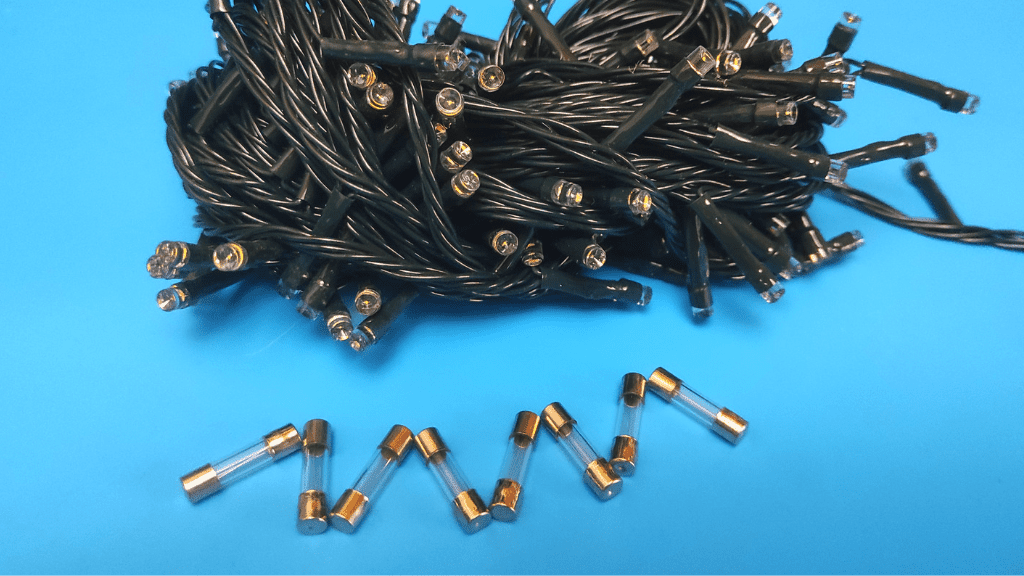
How to Change Fuse in Christmas Lights
Locate and disconnect the Christmas lights’ male socket from any power source, which is the plug with pins rather than holes. Access the fuse by either sliding the door on the socket or prying the entire plug open, then simply remove the bad fuse and replace it with a new one with the same ratings.
We will explain each of these steps so you understand them better and know exactly what to do.
- Disconnect The Lights From The Power Source
The very first thing you want to do is to take off the lights from the tree and unplug them to remove any probability of electrocution.
Here, you disconnect the entire Christmas light from the point it plugs into a socket.
To prevent any electrocution or damage while doing this, turn off the switch at the socket, then take out the light by pulling on the plug rather than the cord.
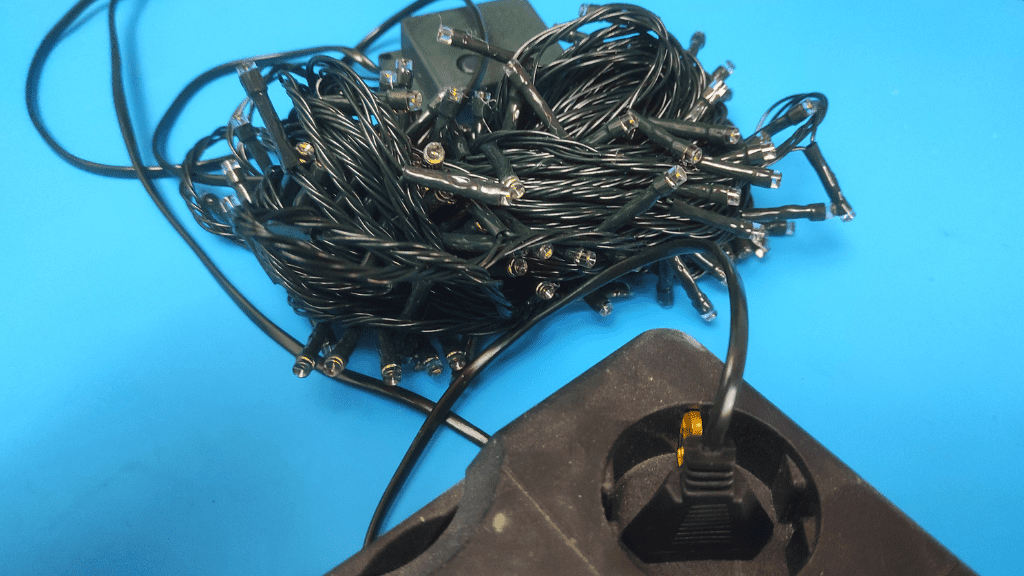
- Locate The Male Christmas Light Socket
The fuses protecting Christmas lights are typically located in the male sockets.
In case you don’t know what they are, male sockets are the Christmas light plugs that come with pins rather than holes.
The string of Christmas bulbs that have gone bad has its own male socket and this either plugs into the female socket of another string of bulbs or directly into the wall.
If your Christmas bulbs are connected in series, all the bulbs will not come on and you typically deal with just one male socket that goes into the wall socket.
When the lights are connected in parallel, I.e, some strings are working while others are not working, you will have to deal with the male socket of the faulty strings of bulbs.
Follow the string of lights to see where it connects to. Once you do this, gather the male sockets of all the faulty strings and move to the next step.

- Open Up The Male Sockets
Opening your male sockets to have access to bad fuses is a straightforward process.
The male sockets of Christmas lights commonly come with a marking that shows just where the fuse is.
This marking is an arrow on a sliding door that points away from the cord, with the direction representing where to slide the door towards.
For plugs that have this marking and mechanism, simply slide the door open to expose the fuse.
Look for the grooves on the sliding door and pop it open with a flat-headed screwdriver or possibly a small knife.
Just be careful with the amount of pressure you’re applying so you don’t damage the socket or hurt yourself.
If your Christmas light socket does not have this, then having access to the fuse may be a little more difficult.
You may need a screwdriver to open up the plug or a thin sharp object to pry it open.

- Remove The Old Fuses
Once you have opened up the male socket, the fuses should be visible to you.
Although most sockets come with a set of two fuses, it isn’t rare to see some sockets with just one fuse. This could be the case for you also.
Using the small screwdriver or tiny sharp object you used to open the plug, bring out the fuses gently without damaging them.
You don’t want to damage them as, in some cases, they could be working properly and your lights may have a different issue.
Make sure the sliding door is opened well so it is much easier for you to reach and take out the fuses.
You also have to check if the set of fuse is bad or not, but this is covered in the latter parts of this article.
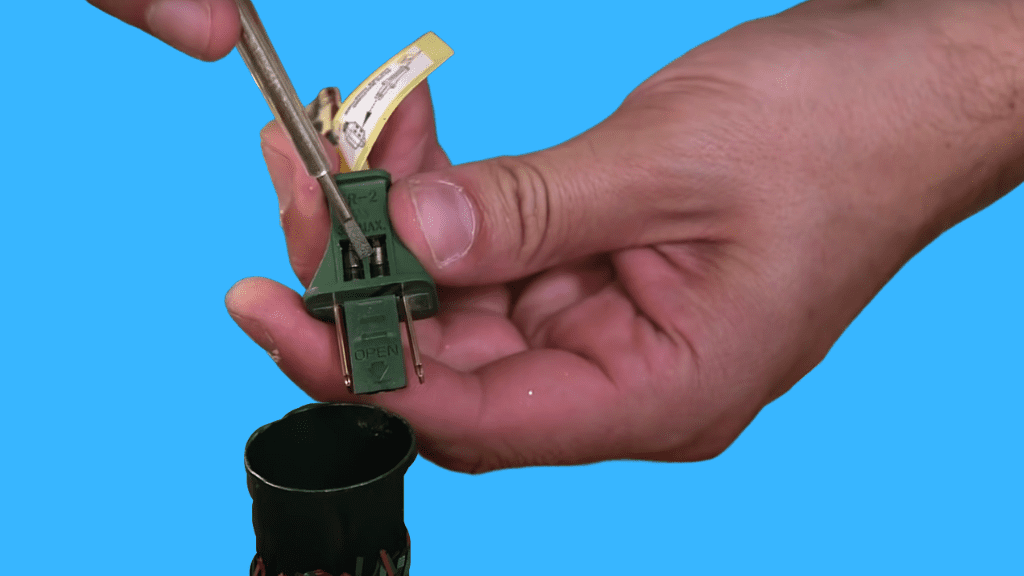
- Install The Replacement Fuses
Sometimes, Christmas lights come with replacement fuses, but most times, you have to buy a new one from a store separately.
If you have to do the latter, make sure that the fuse you get from the store is the exact same as the burnt fuse.
By “exact same”, we mean the fuse should be of the same size, type, and, more importantly, rating.
The fuse rating is an important element in its protective characteristics and buying a fuse that is not like the old fuse puts your bulbs at risk.
After getting the right type of new fuses, either from a store or the spares that came with your lights, replace them into the fuse socket.
You should replace them carefully, as fuses are very fragile and you don’t want them to break when they’ve not even been used.

- Close Your Christmas Light Plug
After placing all the fuses in the fuse sockets, simply close the socket the same way you opened it.
Make sure that the door to the fuse compartment is properly shut to prevent your fuses from falling out.
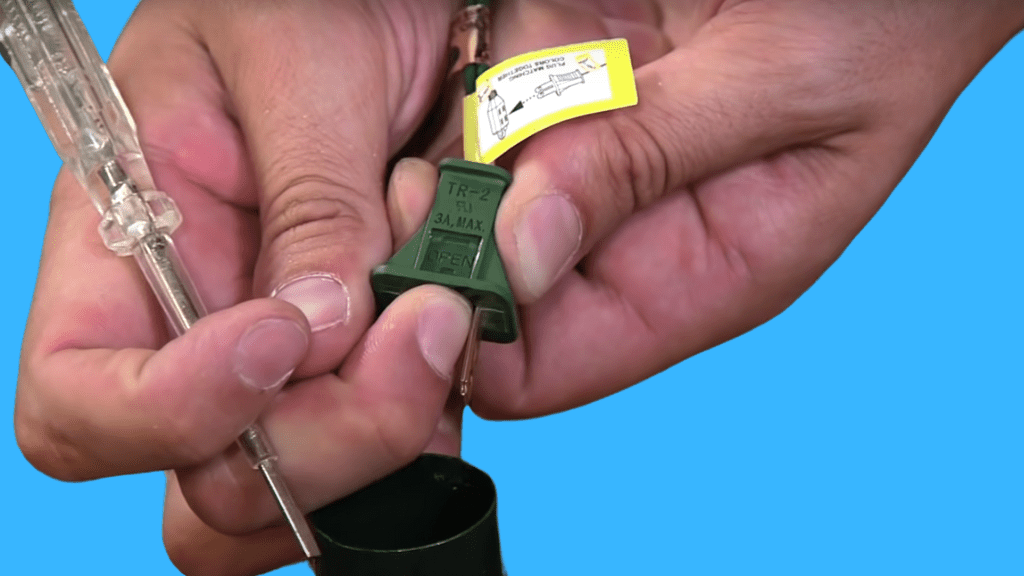
- Test The Christmas Lights
Now that you’re done with all this, here comes the final and easy part. You have to plug the lights back into the wall outlet to test them.
Do this by plugging the male socket into other female sockets and then the entire Christmas light into the wall outlet. If the bulb lights up, then your mission was a success.
If not, the issue with your lights may not be the fuse.

How To Tell If Christmas Light Fuse Is Blown
Your Christmas light fuse is most likely blown if it has dark burn marks on it. If your fuse is transparent, it is definitely blown if the metal link in it is melted or broken. Multimeters can also be useful for telling if a fuse is blown or not.
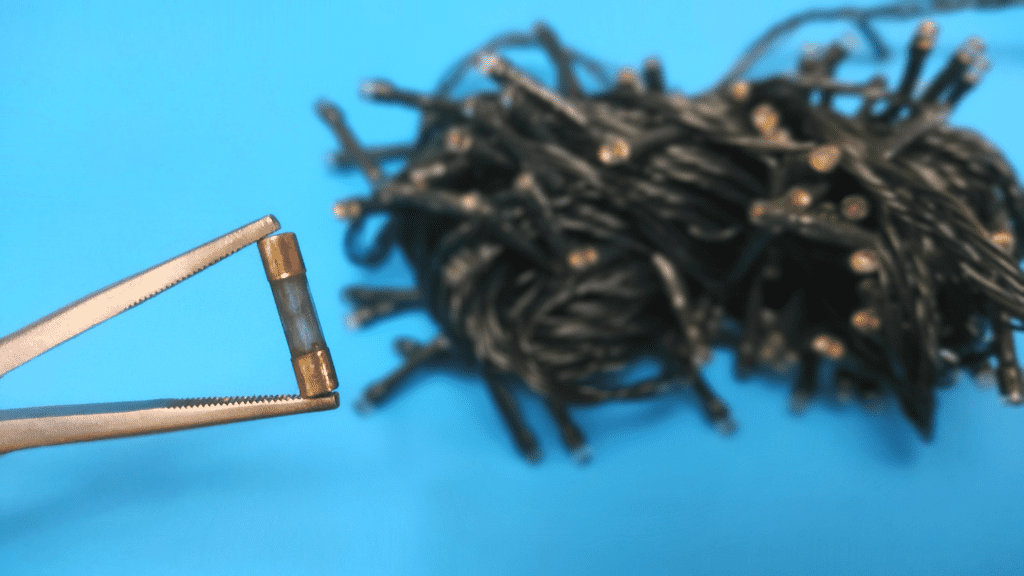
Checking if the fuse is blown or not is quite important. You don’t want to waste your money getting replacements when the original set of fuses is still in good condition.
Visually inspecting the fuse for any dark marks or physical deformity is the easiest way of diagnosing it for faults. What makes this even easier is when your Christmas lights make use of a transparent fuse.
Fuses have internal metal links that conduct current from one end to another and melt when overcurrent passes through them.
A fuse blowing means this metal link has melted, so when you have transparent fuses, you easily see whether this is the case or not.
A melted link stops the flow of current to other parts of the circuit. When a fuse blows in your Christmas light plug, the lights don’t receive any electrical current, hence, they don’t come on.
If the fuse isn’t transparent, you inspect for dark marks. These signal that the fuse is burnt and no longer useful.
Sometimes, it may be a bit difficult to see these dark marks. In this case, you either try to look a little closer at the ends of the fuse or, more reliably, diagnose the fuse using a multimeter.
With a multimeter, you set it to continuity mode and check for continuity between both ends of the fuse. Follow our full guide on testing if a fuse is blown to have a proper understanding of everything you need to do.
You may also use our guide on testing a fuse without a multimeter if you don’t have one. Some of the tools you need here include a lightbulb or a non-contact voltage tester.
If the fuse is still in good condition, your problem is probably with another part of your Christmas lights, like the bulbs themselves.
Thankfully, we have a full guide you may follow on diagnosing faults in Christmas Lights. You can find your fix and the tools you need here.
Remember to use this testing process for the fuses of all strings that don’t work.
More on Fuses With Parallel and Series Christmas Light Connections
Parallel Christmas lights are independently connected to the main power source and, when one Christmas light stops working, the others keep on working.
With Series connections, all lights receive current from the light that comes before them, meaning a fault in one light leads to all the subsequent lights not working.
We commonly have a setup combining these two types of connections and this is where the string of lights comes on.
Here, multiple strings have lights connected in series, while these strings are in parallel with each other.
Every string of light independently receives power from the source through its own male socket, then each light in the string depends on the light before them. This makes diagnosis a whole lot easier.
You can find a lot more useful information about fuses here.
FAQs
How Do You Remove a Fuse From a String of Christmas Lights?
The fuse in strings of Christmas lights is located in the male socket that connects to the power source. You simply slide the door on the plug to reveal the fuse and take it out with a small object.
Why Do Christmas Lights Suddenly Stop Working?
A reason for faulty Christmas lights is the fuse blowing, which occurs when there are excess strings connected to the Christmas light circuit. A blown or improperly screwed bulb may also be the issue.

Author
Alex Klein is an electrical engineer with more than 15 years of expertise. He is the host of the Electro University YouTube channel, which has thousands of subscribers.
